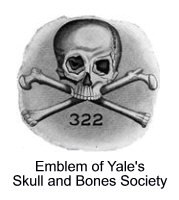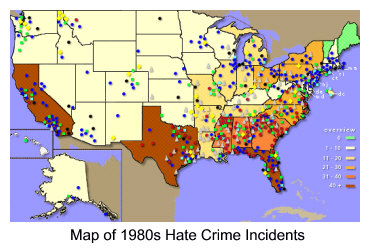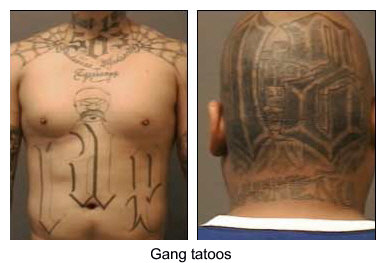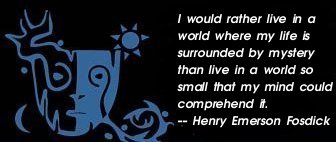|

Male Initiation in America
© 2007 by Barry Spector.
 Every increase in knowledge Every increase in knowledge
is an increase in sorrow.
— Traditional
A man needs a little madness, or else
he never dares cut the rope and be free!
— Nikos Kazantzakis, Zorba the Greek
Whoever isn't busy being born is busy dying.
— Bob Dylan
Western culture, as a whole, long ago lost connection to the great spiritual mysteries and the mythic framework that gave a sense of meaning to life. Partially as a result of that process, the world is now reeling from the effects of a century of constant warfare; up to 200 million people died violently in the twentieth century. Some will claim that patriarchy is the source of our violent ways. But from the point of view of indigenous cultures, masculinity is not inherently violent. But it is the natural aggression in young men that, when not properly channeled, turns anti-social.
From a tribal point of view, modernity lacks the traditional rituals of initiation. Boys do not become mature men automatically; something in them must confront a symbolic death. According to Arnold Van Gennep and Victor Turner, boys were guided through three stages.1 The first was separation from the community. The second was liminality, that ambiguous and terrifying period when old identities were torn away and, wrote Mathew Arnold, the initiates were "...wandering between two worlds; one dead, the other powerless to be born." Here they learned sacred knowledge of the tribe — and a sense of what they were meant to be. In the third stage, re-incorporation, the community welcomed and celebrated those youth who had completed the trials, those persons who had died as boys and been reborn as men.
In our culture, we retain patterns of socializing young people, but little more. Our initiations teach the values of competition, materialism, and individualism — within the heritage of Puritanism, militarism and unease with the physical body. Most of our rituals, then, are reaffirmations of the status quo. Our rites of passage merely note very mild transitions into the consumer lifestyle, rather than marking any meaningful change. "Because our culture denies the craving," writes Michael Ventura, "we can't possibly meet the need — so most of us never truly grow up or feel, in our heart of hearts, adult."2
Boys learn their gender roles very early. Psychologist Carol Gilligan observes that boys at around the age of five begin to mute their emotional expression. "The sacrifice of relationship is the ritual of initiation into patriarchy."3 Girls, she notes, go through a similar process later, at twelve or thirteen. But both lose a degree of relational capacity, or "voice," in a "process of initiation that is akin to trauma."4 And each boy learns, through a hundred subtle lessons in which he is pitted against others, that competition is the culture's primary value.
 To a great extent, American initiation is class-based. Middle-class white youth experience a conventional series of events intended to mark their passage, such as birthday parties, graduations and Bar Mitzvahs. These rituals are confirmative rather than transformative; they mark the social standing of a family as much as the new identities of the participants. The churches have retained the rite of baptism in its various forms, all of which are rooted in the ancient rituals of purification and initiation into community. But modern rites of passage offer no sense of risk — the potential loss and restructuring of identity. Thus it is rare for a young person to feel (and be treated as) fundamentally different, let alone transformed, after having been baptized or Bar Mitzvahed. To a great extent, American initiation is class-based. Middle-class white youth experience a conventional series of events intended to mark their passage, such as birthday parties, graduations and Bar Mitzvahs. These rituals are confirmative rather than transformative; they mark the social standing of a family as much as the new identities of the participants. The churches have retained the rite of baptism in its various forms, all of which are rooted in the ancient rituals of purification and initiation into community. But modern rites of passage offer no sense of risk — the potential loss and restructuring of identity. Thus it is rare for a young person to feel (and be treated as) fundamentally different, let alone transformed, after having been baptized or Bar Mitzvahed.
And, because we live in a secular and tolerant society, most of our ceremonies of transition lack another factor that is necessary for radical change to occur — irreversibility. Psychologist Luigi Zoja points out that one reason for the recent decline of the religious vocation is the very possibility of breaking one's vows and leaving the priesthood: "the reversibility of the vocational choice deprives it of its radically transformative character, complete with the death of the old personality, necessary for the satisfaction of our need for deep psychic rebirth...A similar consideration could be applied to marriage..."5 If we know that we can change our mind and go back, it is not an initiation.
 Some college fraternities have retained classical, if superficial, ritual forms. Ultimately, though, writes Ray Raphael, they "allow a youth to retain his childish ways while simultaneously laying claim to a more manly status."6 The rituals of societies such as Yale's "Skull and Bones" are quite successful in their goals of cementing life-long political unions. They offer young men of the elite classes confirmation of a sense of entitlement — and, regretfully, into a sense of group identity that excludes the vast majority of their own social class, let alone normal citizens.7 Some college fraternities have retained classical, if superficial, ritual forms. Ultimately, though, writes Ray Raphael, they "allow a youth to retain his childish ways while simultaneously laying claim to a more manly status."6 The rituals of societies such as Yale's "Skull and Bones" are quite successful in their goals of cementing life-long political unions. They offer young men of the elite classes confirmation of a sense of entitlement — and, regretfully, into a sense of group identity that excludes the vast majority of their own social class, let alone normal citizens.7
Noam Chomsky insists that in democratic societies it is highly educated people who are in fact the most highly indoctrinated. In America, as opposed to authoritarian nations,
...you don't get in any trouble if you tell the truth, but you still can't do it... A good education instills in you the intuitive comprehension — it becomes unconscious and reflexive — that you just don't think certain things, things that are threatening to power interests.8
Then come academic and professional tests based upon competition. But doctoral and licensing exams function to incorporate only the chosen few. The issue of merit is crucial to an understanding of American social initiation. Tribal societies value the contributions of all their young men; thus initiations are communal, and for the most part mandatory. Though the dangers are real, all of the young men are encouraged to complete the transition. By contrast, in America, one of the primary functions of academic and professional initiations is to choose who will succeed, and who will not.9
With competition as our most fundamental value, we are forced into definitions of both success and masculinity that can only be understood in terms of the relative failures of others. Thus the acquisition of money and consumer goods, rather than the achievement of wisdom, become the mark of the successful man. And the inability to acquire wealth (or — in America — at least independence) results in guilt, shame — and rage. It creates a population of self-defined losers who are excluded from the initiatory group. In 2004, the population of such "disconnected" young Americans (18 to 34-year old males who do not work, are not in school and lack a degree beyond high school) was nearly four million. But they are not to blame. Most of them know intuitively that modern culture provides neither a community of elders nor the safety for them to risk real transformation. Instead, many find themselves attracted to hate groups, which accept them solely on the basis of their race and gender but offer them a continuing sense of both belonging and of privilege. But all "pseudo-rituals" — including substance abuse — are inherently unsatisfying, since they provide neither the real transformation nor the aknowledgement that all young people long for. Thus, they must be repeated endlessly.

Many young men, mostly from the middle class, attempt to create their own initiations by intentionally approaching or creating the symbolic brush with death that real initiation provides. They may climb mountains, ride motorcycles, participate in "extreme" sports or go on solo vision quests in the desert. Such experiences have the undeniable potential of validating a person's sense of ability and self-worth, but they also come with a shadow side. They may provide the exhilarating sense of having passed through danger. But this brush with literal death lacks a symbolic component, it occurs outside of a ritual container, and it has no social or spiritual context. One may experience momentary authenticity and potency; but without being welcomed back into the village as a transformed person, one receives little lasting nourishment. And the longing for this acknowledgement is so intense that one returns to the experience over and over, hoping to get something it cannot provide. This too is the essence of addiction.
 The working class has another traditional form of initiation: the military. Boot-camp instructors know the essential principles of initiation. Former officer Gwynne Dyer observes that basic training works with three common adolescent components: "...a fair amount of aggression, a strong tendency to hang around in groups, and an absolutely desperate desire to fit in."11 The process breaks down a recruit's sense of individuality and replaces it with something new: the anonymous but intensely loyal group member. Philip Caputo wrote that by the third week of basic training, the young men had learned to obey orders instantly, without thinking: "Each platoon had been transformed from a group of individuals to one thing: a machine of which we were merely parts."12 The military is the one institution in America that is highly ritualized, and this fact is a major attraction in our secular society. The destruction of an individual ego by the "elders" and its replacement with membership in something that mimics a closed initiatory group does thrust the young man into a form of liminal space. Within that space, the training does present obstacles to be overcome that can evoke the trials of the traditional Hero's Journey. Trainers, however, typically assign those obstacles the stereotyped characteristics of the enemy. This process literalizes what otherwise might have symbolized the defeat of a person's inner demons. The working class has another traditional form of initiation: the military. Boot-camp instructors know the essential principles of initiation. Former officer Gwynne Dyer observes that basic training works with three common adolescent components: "...a fair amount of aggression, a strong tendency to hang around in groups, and an absolutely desperate desire to fit in."11 The process breaks down a recruit's sense of individuality and replaces it with something new: the anonymous but intensely loyal group member. Philip Caputo wrote that by the third week of basic training, the young men had learned to obey orders instantly, without thinking: "Each platoon had been transformed from a group of individuals to one thing: a machine of which we were merely parts."12 The military is the one institution in America that is highly ritualized, and this fact is a major attraction in our secular society. The destruction of an individual ego by the "elders" and its replacement with membership in something that mimics a closed initiatory group does thrust the young man into a form of liminal space. Within that space, the training does present obstacles to be overcome that can evoke the trials of the traditional Hero's Journey. Trainers, however, typically assign those obstacles the stereotyped characteristics of the enemy. This process literalizes what otherwise might have symbolized the defeat of a person's inner demons.
 And the military has little interest in encouraging the emergence of the soldier's sense of individual purpose, despite the invitation to "be all you can be." Insight reveals indoctrination into the cult of the warrior as a particularly cruel parody of the real thing. For Robert Moore, these ceremonies "initiate the boy into a kind of masculinity that is skewed, stunted, and false. It is a patriarchal 'manhood.'"13 It is initiation into the culture of death, of killing — or dying — rather than living for the world. "Que viva la morte!" cried the Spanish Fascists. The irony is that death is precisely what the young men are looking for — the symbolic death of their own childhood. Undeniably, the experience of combat will strip away a young person's sense of innocence. He may return home wiser or more cynical about his own darkness — or that of his nation — but in this third phase of the hero's journey, he brings no gift back to his community. And a loss of innocence does not bring new social or spiritual status, but only depression. And the military has little interest in encouraging the emergence of the soldier's sense of individual purpose, despite the invitation to "be all you can be." Insight reveals indoctrination into the cult of the warrior as a particularly cruel parody of the real thing. For Robert Moore, these ceremonies "initiate the boy into a kind of masculinity that is skewed, stunted, and false. It is a patriarchal 'manhood.'"13 It is initiation into the culture of death, of killing — or dying — rather than living for the world. "Que viva la morte!" cried the Spanish Fascists. The irony is that death is precisely what the young men are looking for — the symbolic death of their own childhood. Undeniably, the experience of combat will strip away a young person's sense of innocence. He may return home wiser or more cynical about his own darkness — or that of his nation — but in this third phase of the hero's journey, he brings no gift back to his community. And a loss of innocence does not bring new social or spiritual status, but only depression.
There is a paradox that centers on the issue of choice. Tribal people gave boys almost no choice at all; often the adults dragged them abruptly out of their innocent lives with no warning and thrust them, terrified, into prolonged initiatory ordeals. But in our ceremonies of social advancement, the higher the class, the more choice one has, since there is no question either of real danger or of transformation. Modern, pluralistic society gives people the option to fail, or to not even make the attempt. But this very freedom of choice ensures the weakness of our ceremonies.
Then there are those who truly have little choice — lower class youth, many of whom take advantage of the very few opportunities to channel their energy and their inherent longing for initiation into drugs, violence and youth gangs. Gangs really do meet many of the initiatory needs of young people, including protection, significant relationships, intensity of experience, identification of the "other" (other gangs), discipline, allegiance to a cause or leader, visible group identification through clothing, even ritual scarification (tattoos).14 And gangs provide another factor that helps to constellate the archetype of initiation in young men: the very sense of irreversibility, in the dire consequences of leaving the group. But with no overarching mythical container, and no true elders to guide them through the brush with symbolic death and to give them a cosmology that places their suffering into context, they create rituals of death, not of life.

The teaching tools are the cults of violence and misogyny, and substance abuse. The youths develop a ritual relation to the "spirits" in the bottle. In this context, drug addiction and alcoholism can be an unconscious search for initiatory rebirth. What is missing, according to Zoja, is the ability to assume responsibility for one's own destiny. "It is in the world of drugs that the theme of death is continually activated." The addict may live in "a kind of tormenting ambivalence, in a daily compromise between the need for radical and definitive change and the...escape route of his daily habit."15 Addiction inverts the initiatory process, bringing a temporary "rebirth" without the symbolic death of an immature state of the personality. Too often, it is literal death that follows.
In Michael Meade's words, such attempts at self-initiation become:
...miscarriages of meaning, tragic acts or empty forms ... seen with an eye for initiation and mystery, addictions are rites of substitution... that can't quite create a breakthrough. The ritual...keeps repeating the same alchemical mistake and moves toward actual death when real change was the desire... unlike the conscious efforts of rites of passage, the sacrifice doesn't work; a spiritual home in the heart of the tribe is not found.... Without a ritual to contain and inform the wounds of life, pain and suffering increase, yet meaningful change doesn't occur.16
Drug use and gang membership lead inevitably to another pseudo-initiation: prison, an environment that is a twisted yet powerful manifestation of sacred space.17 A prison cell, like a monk's chamber, is the ultimate ritual container. Many inner-city youth know this and perceive prison as precisely the place for their rites of passage to occur. For most, the possibility of incarceration remains a deterrent. However, writes Luis Rodriguez, "for those who see incarceration as directly tied to their cultural identity, whatever fear exists is reduced."18 But the prison environment can turn young men, imprisoned initially on non-violent offenses, into warriors in service to a corrupt cause, the culture of death.
The closer we look at socialization into the class system, the more important becomes an unbiased view of mandatory (that is to say, forced) public education. The facts, as reported by former teacher John Taylor Gatto, are startling.19 He asks rhetorically, "Could it be that our schools are designed to make sure that not one of them (American children) ever really grows up?"20 The system, modeled on that of the militaristic Prussian state, was in place by 1910. Since then, several generations of children have endured a system that was quite consciously designed, in the words of H. L. Menken, "...to reduce as many individuals as possible to the same safe level, to breed and train a standardized citizenry, to put down dissent and originality."21
The result of this century of public schooling, says Gatto, is "not only a harmless electorate and a servile labor force but also a virtual herd of mindless consumers." It encouraged the children to "... not think at all. And that left them sitting ducks for another great invention of the modern era — marketing."22 Or, to rephrase this process in archetypal terms, education in America utterly reverses the age-old tradition of drawing out of a young person a conscious awareness of his or her own unique gifts and purpose. Instead, it assigns them a number in the production/consumption system. It has reached its logical but predictable conclusion in standardized testing. The system functions with the explicit intention of killing hope and converting it into docility and narcissism.
Leaving aside questions of class, historian James Robertson gives us another example of how our transitions reflect our American emphasis on individualism and independence. Most Americans, sooner or later, feel a compulsion to leave home that is not necessarily shared by young people in most other cultures:
Initiation into adult life does not take place within the family, and it does not mark acceptance into a stable order in a fixed community. Rather, the rite of passage into adult life is a "declaration of independence" ...accompanied very often by physical departure from both family and community...The ritual American act of courage is the declaration of independence-rebellion-migration of the American adolescent.23
 In this context one of our few significant rites of passage becomes the test for a driver's license.24 In this context one of our few significant rites of passage becomes the test for a driver's license.24
But there is no symbolic death of the boy, except in the gang initiations, car accidents and football injuries that adolescents create for themselves in their search for some meaningful transition out of childhood. An uninitiated male will, sooner or later, directly or indirectly, literally or symbolically, attempt to kill someone. Either he will personally engage in — or passively condone — violence, or he will turn it inward, in depression, addiction or suicidal behavior. This is not to say that boys are alone in their unconscious attempts at initiation. Girls usually do not run headlong toward death; they go another route, often into early pregnancies. Girls may also fall into depression, addiction, and/or bad relationships. For both, the results are unpleasant at best, disastrous at worst.
It is no surprise, then, that so many men in America experience the trauma known as the midlife crisis. Murray Stein, in his book In Midlife,25 notes the striking similarities between the traditional pattern of initiation and that of the mid-life transition. It often begins as a result of some tragedy such as severe injury, job loss or especially, divorce. A man enters the separation period of moodiness, regrets about the past and obsession with death. Next comes liminality, with its diminished sense of identity and the re-emergence of issues that had lain dormant during his heroic early adulthood. Most men pass through these stages to the next phase — re-integration — within a fairly short time, and without significant change. A minority of men, however, remain in liminality for years, more or less by choice, and some emerge fundamentally altered, determined to live with awareness and purpose. They understand their liminal condition as a "permanent dimension or depth of the psyche, a 'layer' that threads through all time and occupies a space in every period of life."26
 Midlife crises typically arise in the years between 35 and 55. Indeed, one of Jung's most fundamental contributions was his idea that nature intends the second half of life to be a period in which we become aware of matters not meant to be addressed earlier. For him, it was normal and appropriate for a man to begin to turn inward, emphasize his "inferior function" (usually his emotional life), and give serious attention, perhaps for the first time, to religion and to the fact of death. Midlife crises typically arise in the years between 35 and 55. Indeed, one of Jung's most fundamental contributions was his idea that nature intends the second half of life to be a period in which we become aware of matters not meant to be addressed earlier. For him, it was normal and appropriate for a man to begin to turn inward, emphasize his "inferior function" (usually his emotional life), and give serious attention, perhaps for the first time, to religion and to the fact of death.
But Jung (and Freud before him) dealt almost exclusively with affluent Europeans, people who were living longer than their own ancestors and most tribal people. Furthermore, most people who would have their initiations guided by psychotherapists would do so only inside the private therapeutic chamber, not as part of a ritual community. Seen from an indigenous perspective, midlife may well be only a modern construct, something tribal people with intact traditions of initiation at appropriate ages — adolescence — simply never experience. Or perhaps tribal people experience two halves of life: childhood and adulthood. And thus "midlife," from an indigenous viewpoint, occurs in the years of physical maturation, exactly the years modern people refer to as adolescence. So midlife crises occur in the lives of modern men precisely because such men rarely if ever have the opportunity for initiation during adolescence, and this is why the three-phase structures of both transitions are so similar. The mysterious beauty of this comparison is that nature seems to bring forth spontaneously in middle-aged men what pagan people deliberately used to provoke in their youths.
But for the vast majority who are not even aware of nature's challenge, consumer culture has provided something else — the invitation to remain forever young. From Peter Pan to Michael Jackson on his "Neverland" Ranch, the media have given us images of the boy who won't grow up — as well as celebrities who never seem to age. In the 1980's, with obviously face-lifted and hair-dyed Ronald and Nancy Reagan in the White House, the nation heard a new comic cliché: Dahrling, you look mah-velous! The joke, of course, was on all of us, as America had begun a crash program of cosmetic surgery. Journalist Joan Ryan observes that three of the most popular TV shows of the 1990s — Seinfeld, Friends and Sex and the City — were about "adults who can't quite escape from adolescence."27 The mythic literature tells us about ourselves, and we snicker anxiously, as we did at the frat-house antics of President Clinton's sex scandal.
But to Paul Shepard, Americans celebrate childhood innocence because their own childhood did not serve its purpose. It is "to grieve for our own maturity, not because maturity is synonymous with childhood, but because then it was still possible to move, epigenetically, toward maturity."28 One of the costs of this clinging to childhood in the modern world is alienation, that sense that we have lost a true animating spark; and if we have, then so has the natural world. Thus generations of young men fall into the trap of projecting their own need for rebirth onto the world itself; and they mistakenly set out to literally destroy it — or themselves — rather than to "die" into adulthood.
Modernity has created a population of tens of millions of uninitiated men and elevated that condition to one of relatively high status, thus inverting in less than a century one of the oldest of all social relationships. Old people (whom we formerly called elders) no longer have status in American culture; rather than turning to them for spiritual and ritual guidance, we segregate them into the ghettoes of nursing homes and gated communities because their very existence reminds us of that demon, old age. Perceiving themselves as useless, the elderly, especially recently retired men, may decline rapidly toward life's final initiation into death. Traditional societies have always ritualized this last phase as a final initiation into the world of the ancestors and spirits, as one more rebirth into another state of being.
It is precisely this — rebirth — that young men are crying out for in their outrageous and risky behavior. They long to have their natures transformed so as to be able to serve a meaningful cause. And a quality of rebirth is what they could provide for their communities if we were to create — or remember — meaningful initiation rituals for them.
(This article is excerpted from Barry Spector's book, Madness At The Gates Of The City: The Myth Of American Innocence. He is seeking a publisher.)
References
- Turner, Victor, The Ritual Process (Ithaca: Cornell Univ. Press, 1969)
- Ventura, Michael, Letters at Three A.M.: Reports on Endarkenment (Dallas: Spring Pubs., 1993), p. 31
- Gilligan, Carol, The Birth of Pleasure (NY: Alfred Knopf, 2002), p. 72
- Ibid, p. 224
- Zoja, Luigi, Drugs, Addiction and Initiation — The Modern Search For Ritual (Daimon Verlag, 2000), p. 112
- Raphael, Ray, The Men From the Boys — Rites of Passage in Male America (Lincoln: Univ. of Nebraska Press, 1988), p. 92
- Robbins, Alexandra, Secrets of the Tomb: Skull & Bones, The Ivy League and the Hidden Paths of Power (Back Bay Books, 2002)
- Chomsky, Noam in lecture
- The Men From the Boys p. 41
- Labbe, Theola, "More Young Adults Found 'Disconnected,'" Washington Post, 6/3/04
- Dyer, Gwynne, War (quoted in Dobie, Kathy, "AWOL In America," Harper's magazine, March. 2005, p. 35
- Caputo, Philip, A Rumor of War (NY: Ballantine, 1977), p. 10
- Moore, Robert, and Gillette, Douglas, King Warrior Magician Lover (Harper SF, 1990), p. 5
- Rodriguez, Luis, Hearts and Hands: Creating Community In Violent Times (NY: Seven Stories Press, 2001)
- Drugs, Addiction and Initiation, p. 59-63
- Meade, Michael, Introduction to Mircea Eliade: Rites and Symbols of Initiation (Harper Collins, 1958. Spring Pub., 1995), p. xx-xxii
- Moore, Robert, The Archetype of Initiation, Havlick, Max J., ed. (Xlibris, 2001), p. 151
- Hearts and Hands, p. 129
- Gatto, John Taylor, Dumbing Us Down: The Hidden Curriculum of Compulsory Schooling (New Society Pubs., 1992); also: "Some Lessons From the Underground History of American Education," in Everything You Know Is Wrong, Russ Kick, ed. (NY: The Disinformation Company, 2002), p. 274-287
- Gatto, "Against School: How Public Education Cripples Our Kids, and Why," Harper's Magazine, 9/03, p. 33-8
- Ibid, p. 35
- Ibid
- Robertson, James O., American Myth, American Reality (NY: Hill & Wang, 1980), p. 149-50
- Ibid, p. 191-2
- Stein, Murray, In Midlife — A Jungian Perspective (Dallas: Spring Pubs., 1983, 1994)
- Ibid, p. 47
- Ryan, Joan, San Francisco Chronicle, 12/02/03, p. A21
- Shepard, Paul, Nature and Madness (SF: Sierra Club Books, 1982), p. 121-2
 Barry Spector writes about American history and politics from the perspective of mythology and archetypal psychology. He is seeking a publisher for his book, Madness At The Gates Of The City: The Myth Of American Innocence. Barry is a regular performer at Great Night of Soul poetry events in the San Francisco Bay Area. He and his wife Maya present Oral Traditions Salons and facilitate an annual "Day of the Dead" grief ritual. Bay Area readers are encouraged to email him at shmoover@comcast.net to get on his mailing list for these events. Barry runs a furniture moving company, but he would rather move your soul.
Barry Spector writes about American history and politics from the perspective of mythology and archetypal psychology. He is seeking a publisher for his book, Madness At The Gates Of The City: The Myth Of American Innocence. Barry is a regular performer at Great Night of Soul poetry events in the San Francisco Bay Area. He and his wife Maya present Oral Traditions Salons and facilitate an annual "Day of the Dead" grief ritual. Bay Area readers are encouraged to email him at shmoover@comcast.net to get on his mailing list for these events. Barry runs a furniture moving company, but he would rather move your soul.
Return to Mythic Passages Menu
Subscribe to the Mythic Passages e-magazine
|

